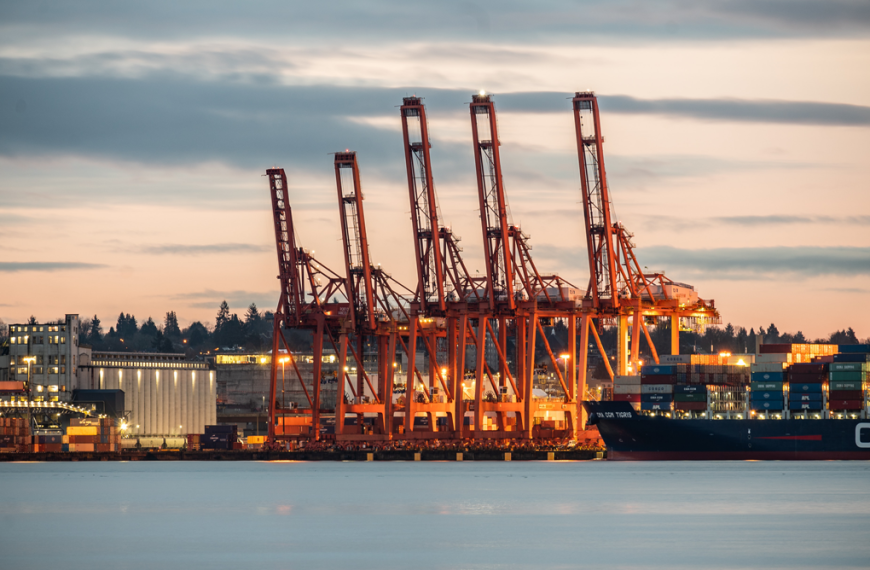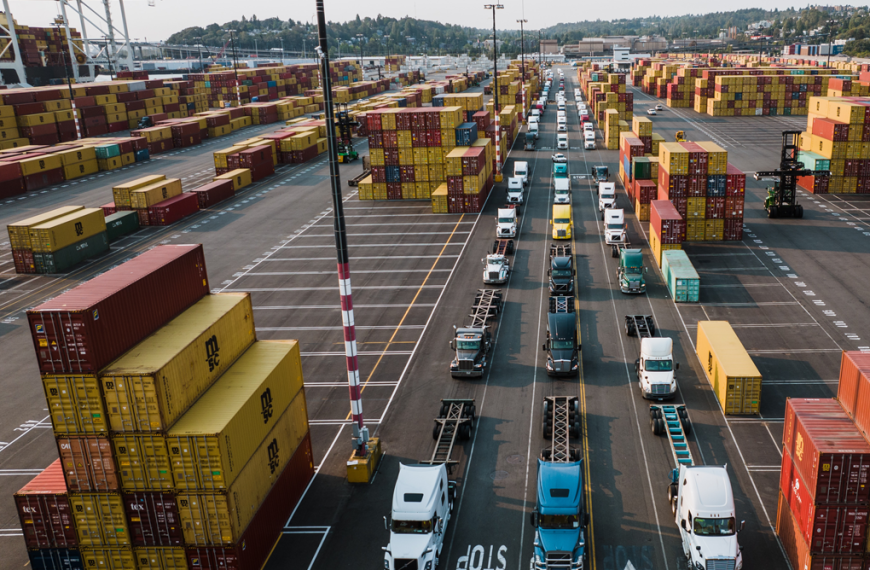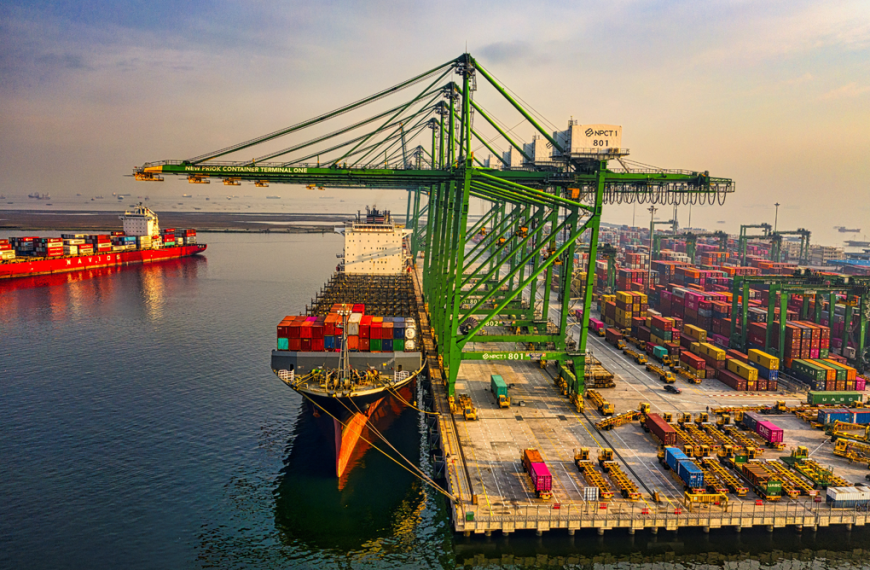The freight industry is no stranger to change, but the rise of e-commerce has brought about a revolution of its own. With the click of a button, consumers can now purchase goods from the comfort of their homes, and this seismic shift in consumer behavior has had a profound impact on the freight transportation landscape. In this blog post, we will take you on a journey through the exciting world of e-commerce and its transformative effects on the freight industry.
- Overview of the E-Commerce Boom
- Streamlining Logistics Processes: A Symphony of Efficiency
- Technology Innovations
- Last-Mile Delivery Solutions
- Warehousing and Fulfillment Transformation: Building the Foundation
- Global Trade: Unlocking New Horizons
- Collaborative Partnerships: Unleashing Synergy
- Related Articles
Overview of the E-Commerce Boom
Picture this: an online shopper eagerly adds items to their virtual cart, and with a swift checkout, their purchases are sent hurtling through the vast web of logistics and transportation networks. This is the power of e-commerce, reshaping the very fabric of the freight industry.
1. Unleashing a Retail Revolution
E-commerce has ushered in a retail revolution, providing businesses with a digital platform to reach customers far and wide. No longer bound by geographical limitations, companies can now tap into a global customer base, creating a surge in demand for efficient freight transportation solutions. The freight industry has stepped up to the challenge, embracing new strategies and technologies to meet the soaring expectations of online shoppers.
2. Bridging the Gap
The seamless integration of e-commerce and freight transportation has bridged the gap between manufacturers, retailers, and consumers. By eliminating intermediaries and enabling direct connections, e-commerce has streamlined the supply chain, leading to faster and more efficient delivery of goods. This newfound efficiency has opened up a world of possibilities for businesses in the freight industry.
3. The Power of Data
In the age of e-commerce, data reigns supreme. Every click, every purchase, and every interaction leaves a digital footprint that can be harnessed to optimize freight transportation. Advanced analytics and machine learning algorithms empower freight companies to make data-driven decisions, enhancing operational efficiency, predicting demand patterns, and reducing costs. The freight industry has become a data-driven powerhouse, embracing the digital revolution with open arms.
4. Rising to the Challenge
As e-commerce continues to reshape the retail landscape, the freight industry faces new challenges and opportunities. Last-mile delivery, once a mere afterthought, has now become a battleground for innovation. Companies are exploring unconventional solutions, from autonomous delivery vehicles to drone technology, to ensure speedy and convenient doorstep deliveries. The competition is fierce, and only those willing to adapt and embrace change will thrive in this new era.
5. Collaboration for Success
Thriving in the e-commerce era requires collaboration and partnership. Freight companies are joining forces with e-commerce platforms to create synergies that benefit both parties. By integrating their systems and sharing resources, these collaborations aim to optimize the entire supply chain, from order placement to final delivery. The freight industry is forging new alliances, breaking down barriers, and revolutionizing the way goods are transported and delivered.
As the e-commerce boom continues to reshape the retail landscape, the freight industry stands at the forefront of this revolution. By embracing technology, leveraging data, and fostering collaboration, freight transportation is evolving into a seamless, efficient, and customer-centric experience. The future is bright for those who dare to innovate and thrive with e-commerce.
So, buckle up and get ready to embark on this exciting journey as we dive deeper into the transformative impact of e-commerce on the freight industry. Stay tuned for our next blog post, where we will explore the streamlining of logistics processes in the ever-evolving world of e-commerce and freight transportation.
Remember, the world is changing, and the freight industry is at the heart of this revolution. Embrace the power of e-commerce, adapt, and seize the opportunities that lie ahead!
The freight industry is undergoing a remarkable transformation in the wake of the e-commerce revolution. As online shopping continues to gain momentum, freight transportation is evolving to meet the demands of a rapidly changing landscape. In this blog post, we delve into the exciting realm of streamlining logistics processes and how it is reshaping the freight industry.

Streamlining Logistics Processes: A Symphony of Efficiency
Imagine a symphony orchestra playing in perfect harmony, with each instrument contributing its unique melody to create a breathtaking performance. Similarly, in the freight industry, streamlining logistics processes orchestrates an ensemble of efficiency, seamlessly bringing together technology, innovation, and collaboration.
1. Embracing Technological Innovations
Technology is the driving force behind the streamlining of logistics processes in the freight industry. Advanced systems and software solutions are revolutionizing every aspect, from order management to warehouse operations. Transportation management systems (TMS) automate and optimize route planning, load optimization, and carrier selection, reducing costs and improving delivery times. Warehouse management systems (WMS) employ barcode scanning, RFID technology, and real-time inventory tracking, enhancing operational efficiency and accuracy.
2. Enhancing Visibility and Transparency
Real-time visibility has become a game-changer in freight transportation. Through GPS tracking and sophisticated telematics, shippers, carriers, and customers gain unprecedented visibility into the location and status of shipments. This enhanced transparency empowers stakeholders to proactively address potential disruptions, optimize delivery routes, and provide accurate delivery estimates. With this newfound visibility, the freight industry is elevating customer satisfaction to new heights.
3. Collaboration and Partnership
Streamlining logistics processes necessitates close collaboration between stakeholders in the freight industry. Freight forwarders, carriers, and e-commerce platforms are forming strategic partnerships to synchronize their operations and share vital data. By integrating systems and processes, they achieve end-to-end visibility, seamless information flow, and streamlined operations. This collaboration eliminates bottlenecks, reduces transit times, and enables faster and more reliable delivery of goods.
4. Leveraging Data Analytics
Data analytics plays a pivotal role in optimizing logistics processes. By analyzing vast amounts of data, freight companies can uncover patterns, trends, and insights that drive informed decision-making. Predictive analytics helps anticipate demand fluctuations, enabling better inventory management and ensuring sufficient capacity to meet customer expectations. By harnessing the power of data, the freight industry is optimizing resource allocation, improving route planning, and enhancing overall operational efficiency.
5. Automation and Robotics
Automation and robotics are transforming the freight industry by streamlining labor-intensive tasks and enhancing operational efficiency. Autonomous vehicles and drones are revolutionizing last-mile delivery, reducing costs, and expediting shipments. Robotic process automation is streamlining documentation, order processing, and invoicing, minimizing errors and improving accuracy. By embracing automation, the freight industry is freeing up human resources to focus on more value-added activities, leading to increased productivity and customer satisfaction.
As e-commerce continues to reshape consumer behavior, the freight industry is embracing the challenge of streamlining logistics processes. Through technological innovations, enhanced visibility, collaboration, data analytics, and automation, the industry is achieving unprecedented levels of efficiency and customer satisfaction. The harmonious integration of these elements is revolutionizing freight transportation, propelling it into a future where speed, accuracy, and reliability are the hallmarks of success.
Stay tuned for our next blog post, where we will explore the fascinating world of last-mile delivery solutions and how they are shaping the freight industry in the age of e-commerce. Remember, the key to thriving in this revolution lies in the ability to adapt, innovate, and streamline logistics processes for a brighter future in the freight industry.
Are you ready to witness the symphony of efficiency in the freight industry? Join us as we continue this captivating journey!

Technology Innovations
Technology Innovations: Paving the Way for the Future
Picture a world where freight transportation seamlessly intertwines with the power of technology, where data-driven insights and automation propel the industry forward. This is the reality that technology innovations are forging, redefining the boundaries of what is possible in the freight industry.
1. The Rise of Automated Systems
Automation is revolutionizing various aspects of freight transportation, streamlining operations and enhancing efficiency. Automated warehouse systems equipped with robotics and conveyors optimize order fulfillment processes, reducing human error and increasing throughput.
Automated inventory management solutions leverage sensors and barcode scanning to track inventory in real-time, ensuring accurate stock levels and minimizing delays. By embracing automated systems, the freight industry is embracing a future of speed and precision.
2. Artificial Intelligence (AI) and Machine Learning (ML)
AI and ML have emerged as powerful tools in the freight industry, unlocking new realms of possibilities. Predictive analytics powered by AI algorithms enables accurate demand forecasting, allowing companies to optimize inventory levels and reduce carrying costs.
ML algorithms analyze historical data to identify patterns and anomalies, facilitating proactive risk management and supply chain optimization. The freight industry is harnessing the cognitive capabilities of AI and ML to make smarter decisions and deliver exceptional customer experiences.
3. Real-time Tracking and Telematics
In an era where visibility and transparency are paramount, real-time tracking and telematics have become indispensable. GPS-enabled tracking systems provide precise location data, enabling shippers, carriers, and customers to monitor the status of shipments in real-time.
Telematics solutions offer insights into driver behavior, fuel consumption, and vehicle performance, fostering safer and more efficient operations. With these advancements, the freight industry has gained unprecedented control and visibility over the movement of goods.
4. Blockchain Technology
Blockchain technology is making waves in the freight industry, revolutionizing transparency, security, and trust. By creating an immutable and decentralized ledger, blockchain enables secure sharing of information across the supply chain. Smart contracts automate and validate transactions, streamlining paperwork and reducing administrative burdens. With blockchain, the freight industry is ushering in a new era of trust and efficiency, minimizing fraud and enhancing traceability.
5. Augmented Reality (AR) and Virtual Reality (VR)
AR and VR technologies are transforming the way freight transportation operates, enhancing training, maintenance, and safety procedures. AR solutions provide real-time information overlays, empowering workers with on-the-spot guidance and reducing errors.
VR simulations enable immersive training experiences, allowing employees to practice complex tasks in a controlled environment. By leveraging AR and VR, the freight industry is elevating efficiency, reducing downtime, and enhancing safety measures.
As the freight industry embraces technology innovations, it is poised for a future where efficiency, visibility, and customer-centricity reign supreme. The integration of automated systems, AI and ML, real-time tracking, blockchain, and AR/VR technologies is reshaping the industry’s landscape. By embracing these innovations, the freight industry is not only thriving in the age of e-commerce but also laying the foundation for a more sustainable and connected future.
Stay tuned for our next blog post, where we will explore the fascinating world of last-mile delivery solutions and how they are revolutionizing the freight industry in the era of e-commerce. Remember, the key to success lies in embracing technology and driving innovation for a brighter future in the freight industry.
Are you ready to embark on this thrilling journey into the realm of technology-driven freight transportation? Join us as we uncover the limitless possibilities that lie ahead!
Last-Mile Delivery Solutions
As consumer expectations soar, businesses are continuously seeking innovative last-mile delivery solutions to provide convenient, efficient, and timely service. In this blog post, we delve into the captivating realm of last-mile delivery and explore how it is reshaping the freight industry.

Last-Mile Delivery Solutions: Navigating the Final Stretch
Imagine a relay race where the baton is passed seamlessly from one runner to the next, ensuring a swift and flawless finish. Similarly, in the freight industry, last-mile delivery solutions aim to navigate the final stretch with precision, delivering packages into the eager hands of customers.
1. Same-Day and Next-Day Delivery
In the age of instant gratification, same-day and next-day delivery options have become crucial for meeting customer demands. Freight companies are collaborating with local couriers and leveraging strategically positioned distribution centers to offer speedy delivery services.
By optimizing routes, employing efficient logistics strategies, and utilizing advanced tracking systems, same-day and next-day delivery solutions are redefining the concept of prompt service.
2. Drone Delivery
The advent of drone technology has opened up a new frontier in last-mile delivery. With the ability to fly over traffic and reach remote or congested areas, drones offer a unique advantage. They are capable of delivering small packages swiftly and efficiently, reducing delivery times and costs.
Freight companies are exploring the integration of drones into their operations, harnessing the power of autonomous flight to revolutionize last-mile delivery.
3. Autonomous Vehicles
The rise of autonomous vehicles, including self-driving trucks and delivery robots, is revolutionizing last-mile delivery. These vehicles can navigate the streets with precision, ensuring timely and secure delivery of goods.
By reducing the need for human intervention, autonomous vehicles have the potential to streamline operations, improve efficiency, and minimize transportation costs. The freight industry is embracing this transformative technology to optimize last-mile delivery.
4. Locker Systems
Locker systems have emerged as an innovative solution to address the challenges of package delivery when recipients are not available. These self-service lockers are strategically located in public places, such as shopping centers or apartment complexes.
Couriers can deposit packages in lockers, and customers can collect them at their convenience, using a unique code or smartphone app. Locker systems provide flexibility and convenience while eliminating the need for redelivery attempts.
5. Collaborative Delivery Networks
Collaborative delivery networks bring together various stakeholders, including retailers, freight companies, and independent couriers, to optimize last-mile delivery. These networks leverage shared resources and crowd-based models to achieve faster, more efficient deliveries.
By pooling their capabilities and assets, participants in collaborative delivery networks can overcome capacity constraints, reduce costs, and enhance the overall customer experience.
As e-commerce continues to reshape the retail landscape, the last mile of delivery remains a critical factor for success in the freight industry. Same-day and next-day delivery options, drone technology, autonomous vehicles, locker systems, and collaborative delivery networks are transforming the way packages reach customers.
By embracing these innovative last-mile delivery solutions, freight companies are meeting customer expectations, driving customer loyalty, and thriving in the era of e-commerce.
Stay tuned for our next blog post, where we will explore the fascinating world of warehousing and fulfillment transformation and how it is revolutionizing the freight industry. Remember, the key to success lies in embracing innovation and delivering exceptional last-mile experiences for a brighter future in the freight industry.
Are you ready to embark on this exciting journey through the world of last-mile delivery? Join us as we explore the cutting-edge solutions that are transforming the freight industry!
Warehousing and Fulfillment Transformation: Building the Foundation
Imagine a well-orchestrated dance, where every move is perfectly synchronized to create a seamless performance. In the freight industry, warehousing and fulfillment transformation is akin to this choreography, where technology, efficiency, and customer satisfaction take center stage.
1. Advanced Warehouse Management Systems (WMS)
Warehousing transformation begins with the adoption of advanced Warehouse Management Systems (WMS). These sophisticated software solutions automate and optimize key processes, from inventory management to order fulfillment. WMS utilizes barcode scanning, real-time tracking, and intelligent algorithms to streamline operations, improve accuracy, and enhance overall efficiency. With a comprehensive WMS in place, businesses gain greater visibility into their inventory and can respond quickly to customer demands.
2. Robotics and Automation
The integration of robotics and automation in warehouses is revolutionizing fulfillment processes. Autonomous robots, guided by intelligent algorithms, navigate through warehouses, picking and sorting items with precision and speed. Automated conveyor systems transport goods seamlessly, minimizing human intervention and reducing errors. With the help of robotics and automation, warehouses can handle larger volumes of orders, enhance productivity, and shorten fulfillment cycles, leading to improved customer satisfaction.
3. Inventory Optimization
Efficient inventory management is a crucial aspect of warehousing and fulfillment transformation. By leveraging data analytics and forecasting algorithms, businesses can optimize their inventory levels. Predictive analytics helps identify demand patterns, enabling accurate demand forecasting and better inventory planning. With the right amount of stock at the right locations, warehouses can minimize stockouts, reduce holding costs, and ensure timely order fulfillment.
4. Order Fulfillment Speed and Accuracy
In the fast-paced world of e-commerce, speed and accuracy in order fulfillment are paramount. Warehousing and fulfillment transformation focuses on streamlining processes to ensure swift and error-free order processing. Utilizing pick-to-light and pick-to-voice technologies, warehouse workers can locate and pick items efficiently, reducing fulfillment time. Quality control measures, such as barcode scanning and automated verification systems, help ensure accurate order fulfillment, minimizing errors and returns.
5. Omni-Channel Fulfillment
With the rise of multi-channel retailing, warehouses are adapting to meet the demands of omni-channel fulfillment. They are integrating systems and processes to seamlessly fulfill orders across various channels, including online stores, brick-and-mortar outlets, and third-party marketplaces. By consolidating inventory and optimizing fulfillment processes, warehouses can offer customers a consistent and efficient shopping experience, regardless of the channel they choose.
As e-commerce continues to shape consumer behavior, warehousing and fulfillment transformation is essential for success in the freight industry. Advanced Warehouse Management Systems, robotics and automation, inventory optimization, order fulfillment speed and accuracy, and omni-channel fulfillment are driving the industry forward. By embracing these transformative strategies, businesses can enhance their competitive edge, deliver exceptional customer experiences, and thrive in the age of e-commerce.
Stay tuned for our next blog post, where we will explore the fascinating realm of sustainability initiatives in the freight industry and how they are driving positive change. Remember, the key to success lies in embracing innovation, efficiency, and customer-centricity for a brighter future in the freight industry.
*Are you ready to witness the transformation taking place within the world of warehousing and fulfillment? Join us as we explore the cutting-edge technologies and strategies that are shaping the freight industry!
Global Trade: Unlocking New Horizons
Imagine a vast network of connections spanning continents, where goods flow seamlessly from one corner of the world to another. This is the realm of global trade, where the freight industry acts as the bridge between businesses and markets.
1. Emerging Markets
As e-commerce continues to thrive, emerging markets present exciting opportunities for businesses to expand their reach. Countries with growing economies and increasing consumer purchasing power become attractive destinations for companies looking to tap into new markets. The freight industry plays a crucial role in enabling the seamless transportation of goods to these emerging markets, connecting businesses with a world of untapped potential.
2. Efficient Supply Chain Networks
Efficient supply chain networks are key to capitalizing on global trade opportunities. The freight industry, with its expertise in transportation and logistics, helps businesses establish robust supply chains that span across borders. By optimizing transportation routes, leveraging intermodal solutions, and employing advanced tracking technologies, businesses can ensure the timely and reliable movement of goods across vast distances, enabling efficient global trade.
3. Trade Agreements and Tariff Reductions
Trade agreements and tariff reductions foster a favorable environment for global trade. These agreements aim to lower barriers to trade, promote economic cooperation, and create a level playing field for businesses. The freight industry closely monitors and adapts to changes in trade policies, ensuring smooth customs clearance and compliance with international regulations. By capitalizing on trade agreements, businesses can expand their customer base and unlock new growth opportunities.
4. Cross-Border E-Commerce
The rise of cross-border e-commerce has revolutionized global trade, enabling businesses to reach customers worldwide with ease. E-commerce platforms and marketplaces provide a digital gateway for businesses to showcase their products to a global audience. The freight industry works hand in hand with e-commerce players to facilitate the movement of goods across borders, ensuring a seamless and reliable shopping experience for customers around the world.
5. Sustainability and Ethical Practices
In today’s conscious consumer era, sustainability and ethical practices are crucial considerations for businesses. The freight industry plays a vital role in enabling sustainable global trade by adopting environmentally friendly practices, such as utilizing low-emission transportation modes and optimizing supply chain efficiency. By embracing sustainable and ethical practices, businesses can not only expand their global reach but also appeal to environmentally conscious consumers.
Global trade presents boundless opportunities for businesses in the freight industry. Emerging markets, efficient supply chain networks, trade agreements, cross-border e-commerce, and sustainability initiatives are reshaping the industry’s landscape. By embracing these expansion opportunities, businesses can broaden their horizons, connect with new markets, and thrive in the dynamic world of global trade.
Stay tuned for our next blog post, where we will explore the fascinating world of freight digitization and how it is revolutionizing the industry. Remember, the key to success lies in embracing innovation, global connectivity, and sustainability for a brighter future in the freight industry.
Collaborative Partnerships: Unleashing Synergy
Imagine a symphony where different instruments come together in perfect harmony, creating a captivating melody. In the freight industry, collaborative partnerships orchestrate a similar symphony, bringing together diverse stakeholders to unlock new possibilities.
1. Freight Networks and Alliances
Freight networks and alliances have become an essential component of collaborative partnerships. These networks bring together freight companies, logistics providers, and industry experts, fostering collaboration and knowledge sharing. By pooling resources, expertise, and market insights, freight networks and alliances drive operational efficiencies, expand service offerings, and enhance the overall customer experience.
2. Intermodal Collaboration
In a world where speed and efficiency are paramount, intermodal collaboration is key. The freight industry is witnessing a growing trend of partnerships between different transportation modes, such as air, road, rail, and sea. By seamlessly integrating these modes and optimizing intermodal connections, collaborative partnerships enable faster and more cost-effective transportation solutions. This not only improves supply chain efficiency but also reduces carbon emissions and environmental impact.
3. Technology Integration
Collaborative partnerships leverage technology integration to drive innovation in the freight industry. By sharing data and implementing interoperable systems, partners can streamline processes, improve visibility, and enhance decision-making. Advanced technologies, such as Internet of Things (IoT), Artificial Intelligence (AI), and blockchain, are employed to create seamless data exchange and enhance efficiency across the entire supply chain.
4. Supplier-Customer Collaboration
Collaborative partnerships extend beyond traditional industry boundaries to include suppliers and customers. By fostering closer relationships with suppliers, freight companies can optimize their procurement processes, ensure reliable access to goods and services, and enhance supply chain resilience. Additionally, collaborating closely with customers enables freight companies to gain valuable insights, anticipate demand fluctuations, and tailor their services to meet specific customer requirements.
5. Sustainability Initiatives
Collaboration is instrumental in driving sustainability initiatives in the freight industry. By partnering with stakeholders across the supply chain, freight companies can collectively work towards reducing carbon emissions, implementing eco-friendly practices, and promoting ethical standards. Collaborative partnerships enable the sharing of best practices, the development of joint initiatives, and the creation of sustainable solutions that benefit both the industry and the environment.
Collaborative partnerships are transforming the freight industry, fueling innovation, and driving customer-centric solutions. Freight networks, intermodal collaboration, technology integration, supplier-customer collaboration, and sustainability initiatives are revolutionizing freight transportation. By embracing collaborative partnerships, businesses can stay ahead of the competition, navigate industry challenges, and create a more connected and sustainable future for the freight industry.













